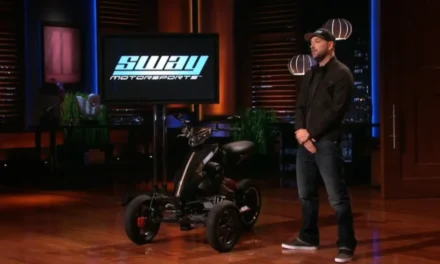In 2025, the dirt bike world has a new MVP, and it doesn’t even have a gas tank. The Stark Varg—a Spanish electric upstart—is beating legacy brands at their own game. It’s winning races, converting pros, and changing the expectations of what a dirt bike can be.
How did a bike with no gears, no exhaust, and no apologies become the king of the motocross scene? Let’s break down the five reasons this electric underdog is now top dog.”
Top 5 Reasons the Stark Varg is Dominating
1. Unmatched Power-to-Weight Ratio
The first time I twisted the Varg’s throttle, my brain short-circuited. This thing doesn’t just accelerate—it launches. With 80 horsepower packed into a 118 kg (260 lb) frame, the power-to-weight ratio is insane.
For comparison, my trusty gas-powered KTM 450 SX-F weighs about 240 lbs but maxes out at ~63 horsepower. The Varg? It’s like strapping a rocket to a mountain goat.
Here’s the kicker: instant torque. Gas bikes need revs to build power. The Varg? It’s all there, right now. No clutch feathering, no waiting for RPMs to climb. Hit a sandy uphill section? The bike digs in and pulls without spinning out.
Jeff Emig, a pro rider, put it perfectly after his first ride: “It’s a totally different feeling… all those things you’re used to feeling for 50 years are different.”
And let’s talk weight distribution. The Varg’s battery sits low, giving it a planted feel in corners. I’ve taken it through tight single-track trails where my gas bike would feel top-heavy, and the Varg just… levitates.
Read: Why Gas-Powered Bikes Are Losing Fans to Stark Dirt Bike

2. Battery Life That Works in the Real World
“Range anxiety” used to be my biggest concern with electric bikes. But Stark’s 6.5 kWh battery shut me up fast. Let’s break it down:
- Trail riding: At a normal pace, you’ll get ~34 miles (about 2.5–3 hours). Dial it back to “max range” mode (25HP), and you’re looking at ~50 miles—enough for a full day of exploring.
- Motocross: On a pro-level track like Thunder Valley, expect ~18 miles per charge. That’s enough for a full 20-minute moto plus practice laps.
Charging is a non-issue if you’ve got a 240V outlet (2.5 hours for a full charge). At home, I plug it in after a ride, grab lunch, and it’s ready to rip again. No gas stops, no oil checks—just ride, recharge, repeat.
3. Customization
Imagine tweaking your bike’s personality with a smartphone. The Varg’s 100+ ride modes let you do exactly that. Want it to feel like a mellow 125cc two-stroke? Slide the power down to 10HP. Need a 450cc four-stroke beast? Crank it to 80HP. You can even adjust throttle response, engine braking, and traction control.
I tested this on a gnarly Colorado trail ride. Started in “Trail” mode (40HP, soft throttle), then switched to “Aggressive” (60HP) for open fire roads. One rider I met said: “I flip through five presets mid-ride. It’s like having five different bikes in one.”
But here’s the caveat: Some riders (myself included) found the lower power modes too tame for technical climbs. If you’re crawling over rocks, you’ll want that instant torque—so don’t be afraid to bump up the settings.
4. Maintenance? What Maintenance?
Let’s be real: Gas bikes are high-maintenance relationships. Oil changes, air filters, valve adjustments… it adds up. The Varg? It’s the low-drama partner you never knew you needed.
- Zero oil changes
- No air filters to clean
- No spark plugs or clutch plates to replace
I’ve put 50 hours on my Varg, and aside from checking tire pressure and lubing the chain, it’s been hassle-free. A recent cost analysis showed that running the Varg for 100 hours costs 90% less than a gas bike. Even the brake pads last longer thanks to regenerative engine braking.
5. Pro Riders Are Switching—And Winning
When pro motocross riders start ditching gas bikes, you know something’s up. Jack Brunell, a top UK rider, recently swapped to the Varg and called its acceleration “mind-blowing.” At the 2025 Arenacross UK, the Varg made history as the first electric bike to beat gas competitors in a major race.
But here’s what surprised me: The Varg isn’t just for pros. I took it to a local amateur race, and the lack of engine noise was a game-changer. No earplugs needed, no complaints from nearby neighborhoods. Plus, the bike’s quiet hum lets you hear your tires gripping the dirt—a weirdly satisfying detail.
The Bigger Picture
Stark Future isn’t just slapping batteries into a frame; they’re rethinking design from the ground up. The KYB suspension (310mm of travel!) and Brembo brakes are pro-grade, and the Pirelli Scorpion tires grip like they’re glued to the dirt.
Stark uses biodegradable materials in their production, and let’s face it: Electric bikes are the future if we want to keep trails open. Noise complaints have shut down riding areas for decades. The Varg? It’s so quiet, you could ride it in a library (don’t try that, though).
Should You Make the Switch?
If you’re a die-hard gas fan, the Varg will challenge everything you know. The lack of engine noise takes getting used to, and yeah, you’ll miss the braaaap sometimes. But after riding it, I can’t unfeel the advantages:
- Instant power that gas bikes can’t match
- Less fatigue (no clutch, no vibrations)
- More ride time, less wrenching
The Stark Varg isn’t perfect—it’s pricey ($12,000+), and charging infrastructure in remote areas is still catching up. But for 95% of riders, this bike isn’t just competitive… it’s better.
As one owner said: “I’ll never go back to gas. This thing’s ruined me for anything else.”






